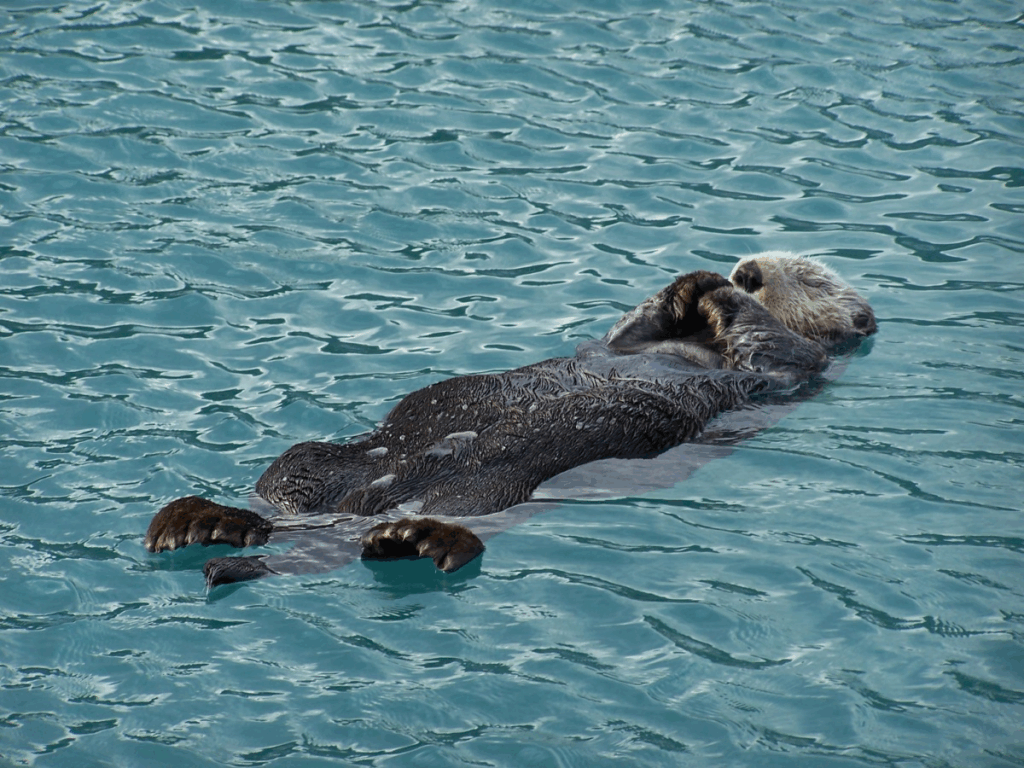Sea Otters (Enhydra lutris) are a widely beloved aquatic mammal found in the northern pacific (Aleutian Islands, Kamchatka Coast, and Hokkaido). Many people know them as the furry creatures that float on their backs and eat, however they play a much more important role than most people realize. As natives of the kelp forests, they play the most important role in maintaining the balance of their ecosystem, being the keystone species. A keystone species is defined as “a species of plant or animal that produces a major impact (as by predation) on its ecosystem and is considered essential to maintaining optimum ecosystem function or structure” (Merriam Webster). In addition to holding the most important role in their ecosystem, they also help combat the effects of climate change by keeping up the health of kelp forests. Sea otters help maintain the health of the kelp forest ecosystem by keeping other animals’ populations in check, and contribute to the carbon trapping abilities of the kelp forest.

Kelp forests are home to many different sea animals. Sea Otters have many options to feed on in the forests but their preference is known to be sea urchins. Despite seeming relaxed and lazy, sea otters actually require ~30% of their body weight in food every single day. These large appetites are part of the reason these otters became so important to their ecosystem. Sea urchin populations can grow exponentially and very quickly if left unchecked. This unchecked population would consume the kelp faster than it can grow. This is where our friends the sea otters come in. Due to their voracious appetites, they are able to keep urchin populations in check, which keeps the balance of the kelp forest ecosystem. Crabs are another issue in the kelp forests. Left unchecked the crab population could consume too many small mollusks, which are important for algae regulation on the surface of seagrass, another plant found in kelp forests. Otters keep these crabs in check just as well as they keep the urchins in check.
Keeping these populations in check is great for the kelp forest ecosystem, but what does this mean exactly for the affect these kelp forests can have on the environment. The key lies in the kelp plant itself. Kelp has an important function known as carbon trapping. This is the absorption of carbon dioxide from the atmosphere by the kelp plant. Healthy kelp is able to absorb a very significant amount of carbon from the atmosphere and keep it stored in the ocean. This stored carbon is known as blue carbon, and kelp blue carbon storage has been shown to be ~20 times more efficient than regular forests on dry land. By keeping the population of urchins in check, the otters indirectly contribute to keeping the carbon in the atmosphere regulated, by helping preserve and keep the kelp plants healthy. Similarly, these Otters help with even more carbon regulation by consuming a large amount of crabs. Too many crabs can cause an overhunting issue of small marine slugs and snails. These mollusks consume the algae which grows on top of seagrass. Without the algae on top, the seagrass efficiently absorbs more carbon, just like the kelp. The less algae, the more carbon can be absorbed. With this in mind we can once again see how the otters contribute to the overall health of the planet by sustaining another way for carbon to get taken in.
Sea Otters may seem like lazy, cute furballs, but they actually perform many vital actions as a keystone species, and contribute to the health of our planet all in one.